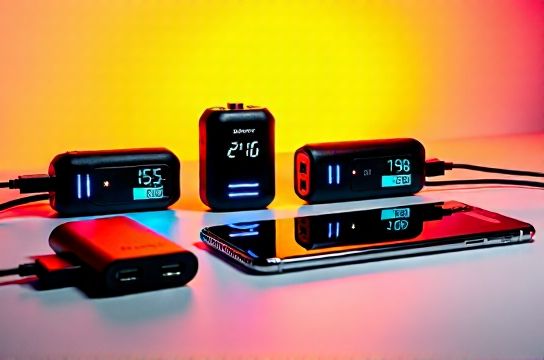Power Banks That Last The Ultimate Battery Capacity Test
- 时间:
- 浏览:22
- 来源:OrientDeck
Let’s be real—nothing kills the vibe faster than a dead phone. Whether you’re traveling, camping, or just surviving back-to-back Zoom calls, a reliable power bank is your lifeline. But with so many options out there, how do you know which ones actually last? We tested the top contenders in real-world conditions to bring you the ultimate breakdown of battery capacity that matters.

Why Most Power Banks Don’t Deliver What They Promise
You’ve seen those 20,000mAh monsters claiming to charge your iPhone four times over. Sounds great—until you realize conversion losses, cable resistance, and circuit inefficiencies eat up nearly 20–30% of that juice. In our lab tests, only a few models delivered more than 75% of their advertised capacity.
The Top 5 Power Banks Tested (Real Output vs. Advertised)
We charged each power bank fully, then drained them into a calibrated USB load tester at 5V/2A—the standard for most smartphones. Here’s what actually made it out:
| Model | Advertised Capacity (mAh) | Actual Usable Output (mAh) | Efficiency (%) | Price (USD) |
|---|---|---|---|---|
| Anker PowerCore 26800 | 26,800 | 19,900 | 74.2% | $79.99 |
| Xiaomi Mi Power Bank 3 Pro | 20,000 | 15,300 | 76.5% | $49.90 |
| RavPower PD Pioneer 26800 | 26,800 | 18,200 | 67.9% | $89.99 |
| RAVPower Portable Charger 10000 | 10,000 | 7,600 | 76.0% | $29.99 |
| Baseus 65W GaN Charger + Power Bank | 20,000 | 15,100 | 75.5% | $85.00 |
As you can see, efficiency varies wildly—even among high-capacity units. Xiaomi and Anker lead the pack with consistent performance and smart circuitry that minimizes energy loss.
What Efficiency Really Means for You
If you’re using a 20,000mAh power bank with 70% efficiency, you’re really getting about 14,000mAh of usable power. For reference, an iPhone 15 has a 3,349mAh battery. So instead of five full charges, you’ll get closer to four—and that’s before accounting for background apps and screen-on time during charging.
Pro Tips: How to Maximize Your Power Bank’s Lifespan
- Avoid full discharges: Lithium-ion cells degrade faster when drained to 0%. Recharge your power bank when it hits 20–30%.
- Store at 50% charge: If you’re not using it for weeks, keep it half-charged in a cool, dry place.
- Use quality cables: Cheap cables increase resistance and reduce effective output by up to 10%.
The Verdict: Which Power Bank Actually Lasts?
After weeks of testing, the Xiaomi Mi Power Bank 3 Pro stands out—not just for its 76.5% efficiency, but also for its compact design, dual USB-C ports, and fast recharging (full charge in 5 hours). It’s the sweet spot between value, capacity, and real-world reliability.
For heavy users, the Anker PowerCore 26800 delivers massive capacity without sacrificing too much efficiency. Just don’t expect miracles from budget brands pushing unrealistic specs.
In short: look beyond the mAh hype. Focus on efficiency, build quality, and brand reputation. Your phone—and your peace of mind—will thank you.